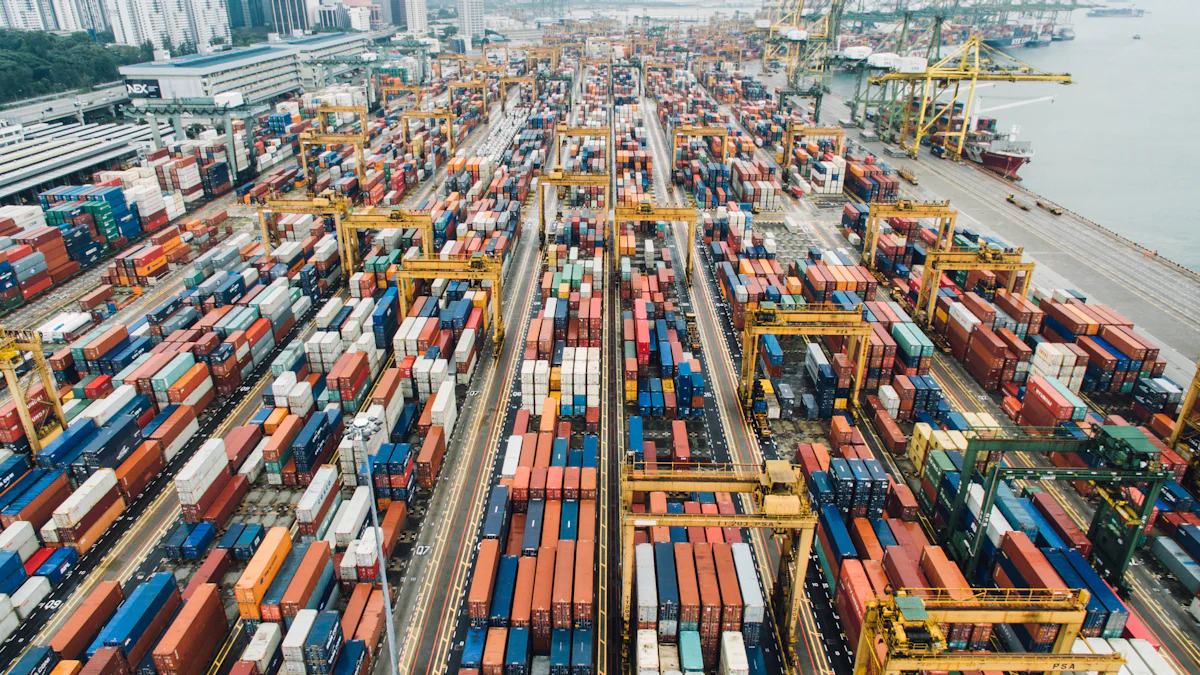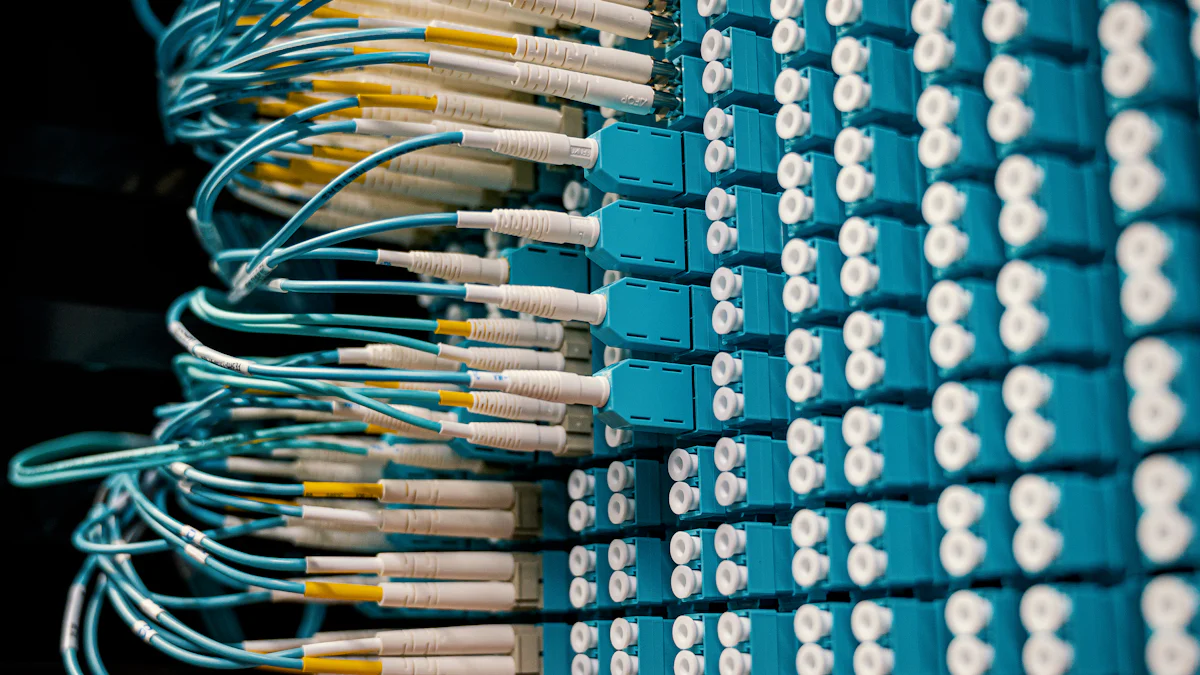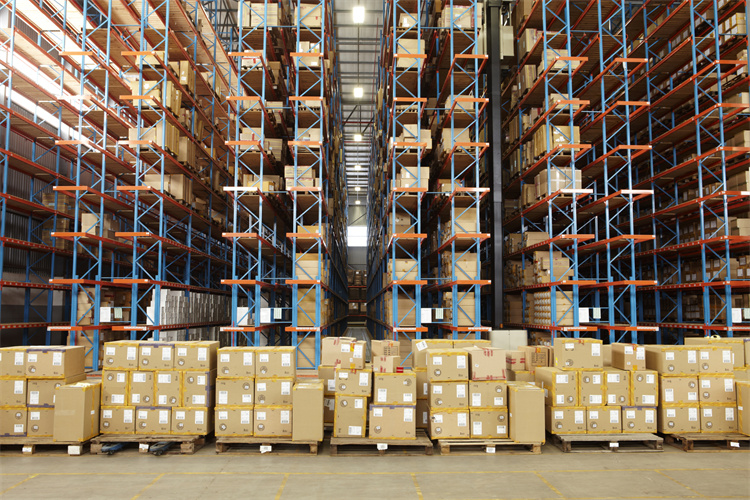How to Build a Digital Supply Chain Strategy for 2025

Supply chains face growing challenges, including inefficiencies from manual processes, geopolitical instability, and frequent natural disruptions. By 2025, adopting a digital supply chain strategy will be essential. Technology, especially AI, has transformed logistics, enabling companies to anticipate demand shifts, reduce costs, and build resilience. Automation ensures adaptability and fosters innovation for future success.
Key Takeaways
Using a digital supply chain plan by 2025 is important. It helps fix problems like delays and breakdowns. Use technology to see and adjust better.
Add smart tools like AI and IoT to improve work. These tools help make better choices, save money, and make customers happy.
Work closely with suppliers and teach your team new skills. This builds a strong digital mindset and helps your supply chain handle changes.
Understanding the Digital Supply Chain
What Is a Digital Supply Chain Strategy?
A digital supply chain strategy focuses on using advanced technologies to optimize supply chain operations. Unlike traditional supply chains, which often rely on manual processes and siloed systems, digital supply chains integrate modern tools like AI, IoT, and cloud computing. This integration enables real-time data sharing and collaboration across all stakeholders. You can expect improved decision-making, faster response times, and greater adaptability to market changes.
To fully digitize your supply chain, you need to connect legacy systems with modern technologies. This connection ensures seamless data flow and operational efficiency. For example, IoT devices can monitor shipments and share data instantly, reducing delays and improving transparency. By adopting a digital supply chain strategy, you shift from static processes to a dynamic, interconnected system that meets evolving customer demands.
Key Components of a Digital Supply Chain
Building a successful digital supply chain requires several critical components. Flexibility is essential for adapting to disruptions and changing market conditions. Data-driven insights allow you to make informed decisions about sourcing materials and predicting demand. Future planning ensures your supply chain remains scalable and sustainable.
Key elements include enhanced visibility, which lets you track every stage of the supply chain in real time. Increased efficiency reduces costs and speeds up operations. Agility and collaboration improve responsiveness and strengthen partnerships with suppliers. These components work together to create a supply chain that is not only efficient but also resilient and customer-focused.
Benefits of a Digital Supply Chain for 2025
Adopting a digital supply chain by 2025 offers measurable benefits. Enhanced visibility ensures you can monitor operations in real time, reducing risks and delays. Increased efficiency lowers costs and improves productivity. Data-driven insights help you anticipate demand and optimize inventory levels. Agility and flexibility enable you to respond quickly to disruptions or market changes.
Other advantages include better customer service through faster delivery times and improved quality control. Sustainability becomes achievable with reduced waste and energy-efficient practices. Scalability ensures your supply chain can grow alongside your business. By leveraging technology like AI, you position your supply chain for long-term success.
Leveraging Emerging Technologies for Supply Chain Transformation

The Role of AI in Supply Chain (AI Supply Chain)
AI is revolutionizing supply chain management by enabling smarter, faster, and more efficient operations. It enhances demand forecasting, allowing you to predict trends and optimize inventory levels. AI-enabled supply chains can analyze vast amounts of data in real time, helping you make informed decisions and reduce costs. By 2025, the integration of Generative AI will further accelerate innovation, making supply chains more adaptable to market changes.
AI also improves task automation, boosting efficiency by up to 40%. For example, it can dynamically reroute shipments based on real-time conditions, ensuring timely deliveries. With AI-enabled supply chains, you gain better control over logistics, enhancing customer satisfaction and operational efficiency.
Automation and Robotics in Supply Chain Operations
Automation in supply chain operations is transforming how businesses handle logistics. Robots streamline repetitive tasks like picking, packing, and sorting, reducing errors and improving speed. Autonomous robots also enhance safety by performing high-risk tasks, allowing your employees to focus on strategic efforts.
Robotics increases productivity and lowers costs. For instance, automated systems can process orders faster, leading to quicker deliveries and higher customer satisfaction. By integrating automation into your supply chain, you can achieve better order fulfillment and operational efficiency.
Real-Time Analytics and IoT for Enhanced Visibility
IoT devices and real-time analytics provide unparalleled visibility into your supply chain. These technologies generate continuous data streams, offering predictive insights to optimize logistics. For example, IoT sensors can monitor shipments, alerting you to potential delays or issues.
Real-time data enables you to address problems before they escalate, ensuring smoother operations. By leveraging IoT and analytics, you can anticipate demand shifts and improve decision-making. This enhanced visibility helps you adapt to sudden market changes, keeping your supply chain resilient and efficient.
Blockchain for Transparency and Security
Blockchain technology ensures transparency and security in supply chain management. It provides a decentralized ledger that records every transaction, making it easier to trace products and verify their origins. This traceability reduces fraud and builds trust among supply chain partners.
Blockchain also enhances collaboration by offering a unified source of information. For example, it simplifies customs processes by providing an objective record of transactions. By adopting blockchain, you can improve supplier relationships and ensure accountability across your supply chain.
Steps to Build a Digital Supply Chain Strategy
Assessing Current Supply Chain Capabilities
Before transforming your supply chain, you need to evaluate its current state. Start by expanding visibility across all stages of your operations. This step ensures you can identify inefficiencies and bottlenecks. Assess your logistics processes to pinpoint areas that need improvement. Implementing technology solutions, such as real-time tracking systems, can help you address these gaps. Collaborate with third-party logistics partners to enhance your supply chain resiliency. Continuously monitor performance metrics to ensure your supply chain adapts to market changes effectively.
A structured approach to assessment lays the foundation for operational efficiency. For example, tracking key metrics like delivery times and inventory turnover helps you measure progress and identify areas for improvement.
Investing in Technology and JUSDA’s Warehouse Solutions
Investing in supply chain technology is critical for achieving scalability and resiliency. JUSDA’s advanced warehouse solutions provide a perfect example of how technology can optimize operations. With over 2.5 million square meters of global warehouse space, JUSDA offers real-time inventory tracking through systems like JusLink. These tools enhance planning and reduce disruptions by providing end-to-end visibility.
JUSDA’s value-added services, such as picking, packing, and labeling, further streamline logistics. By integrating these solutions, you can improve performance and reduce costs, ensuring your supply chain remains competitive.
Enhancing End-to-End Visibility with JusLink
End-to-end visibility is essential for managing disruptions and improving decision-making. JusLink, JUSDA’s intelligent supply chain platform, integrates IoT and AI to provide real-time insights. This platform allows you to monitor every stage of your supply chain, from procurement to delivery. With JusLink, you can anticipate potential issues and adjust your planning accordingly.
Enhanced visibility also improves collaboration with suppliers and partners. By sharing data in real time, you can strengthen relationships and ensure smoother operations. JusLink’s capabilities make it a vital tool for achieving supply chain resiliency.
Fostering Supplier Collaboration and Resiliency
Strong supplier collaboration is key to building a resilient supply chain. Studies show that 61% of Chief Procurement Officers prioritize supplier collaboration to deliver value. By fostering open communication and sharing data, you can improve trust and efficiency. A European automotive manufacturer achieved full transparency across its supply chain using a connected platform. This approach led to a 13% improvement in delivery performance and a 10% reduction in transportation costs.
Collaboration also enhances risk management. By working closely with suppliers, you can identify potential disruptions early and develop contingency plans to maintain operational efficiency.
Building a Digital-First Culture Through Training and Innovation
Creating a digital-first culture requires a commitment to training and innovation. Encourage leadership to participate in digital training sessions to set an example. Promote a growth mindset by allowing employees to experiment and learn from failures. Providing access to digital tools like Asana or Slack enhances collaboration and efficiency.
Breaking down departmental silos fosters cross-functional teamwork, as seen in Amazon’s “Two-Pizza Teams” model. Continuous training programs ensure your team stays updated with the latest tools and techniques. By embedding these practices, you can drive innovation and maintain a competitive edge.
Ensuring Supply Chain Resiliency and Sustainability

Embedding Flexibility into Supply Chain Strategy
Flexibility is essential for building supply chain resiliency. You can achieve this by diversifying your suppliers to avoid over-reliance on a single source. Working with suppliers closer to your operations through onshoring or nearshoring minimizes risks from global disruptions. Additionally, having alternative shipping routes ensures you can adapt quickly to unforeseen challenges.
Implementing dual sourcing for critical components strengthens your ability to respond to supply chain disruption. Flexible product designs allow for component substitution, ensuring production continues smoothly. Postponement techniques, where unfinished products are allocated based on demand, further enhance adaptability. Scalable warehousing solutions also help you adjust inventory levels during periods of uncertainty.
Using Predictive Analytics for Risk Management
Predictive analytics plays a vital role in managing risks effectively. By analyzing historical data, you can forecast demand and optimize inventory levels. This approach prevents stockouts and reduces carrying costs. Predictive analytics also helps you identify potential supplier issues, enabling proactive risk mitigation.
Capacity planning becomes more efficient with predictive tools, ensuring you allocate resources optimally to meet future demand. For example, systems like DRIVE analyze risk factors and prioritize high-risk components, allowing you to create strategic mitigation plans. These insights improve decision-making and help you maintain smooth operations even during disruptions.
Incorporating Green Technologies and Sustainable Practices
Sustainability is becoming a cornerstone of modern supply chains. You can integrate green technologies like solar panels to generate renewable energy for your facilities. Electric vehicles reduce emissions during transportation, while plant-based packaging minimizes environmental impact.
Adopting sustainable manufacturing processes, such as upcycling and zero-waste production, reduces resource consumption. Digital twins enhance agility by providing real-time monitoring and control of your supply chain. Additionally, energy management systems optimize energy use, and 3D printing reduces waste by customizing production parts. Establishing measurable sustainability goals ensures your efforts align with broader organizational objectives, such as reducing carbon footprints.

JUSDA Solutions
To provide you with professional solutions and quotations.
Adopting a digital supply chain strategy ensures your business stays competitive in 2025. You gain long-term benefits like enhanced visibility, efficiency, and sustainability. Leveraging advanced technologies, including ai, strengthens resilience and agility. JUSDA’s innovative solutions, such as JusLink, empower you to future-proof operations and achieve seamless supply chain management.
See Also
Is Your Supply Chain Prepared for the Digital Transformation?
Your Comprehensive Handbook for Manufacturing Success in 2024
Transforming Future Logistics with AI in Supply Chains
Exploring Digital Twins in Modern Supply Chain Management
Navigating Career Advancement Through Future Supply Chain Trends
